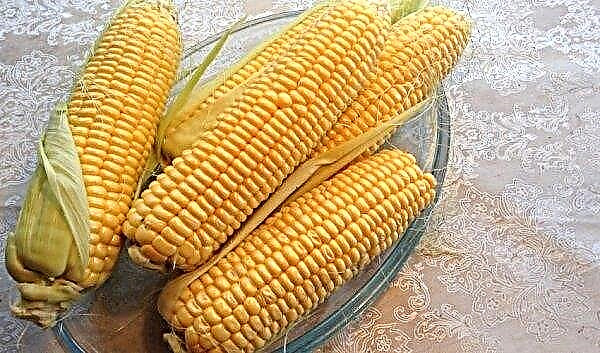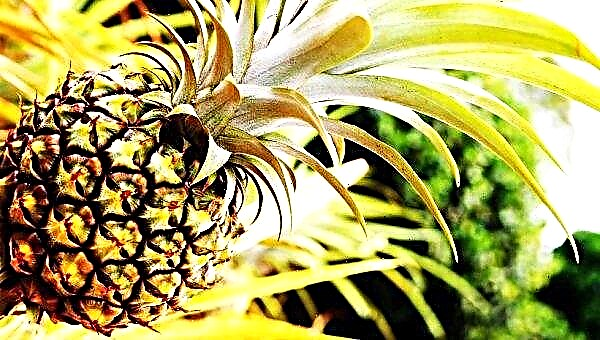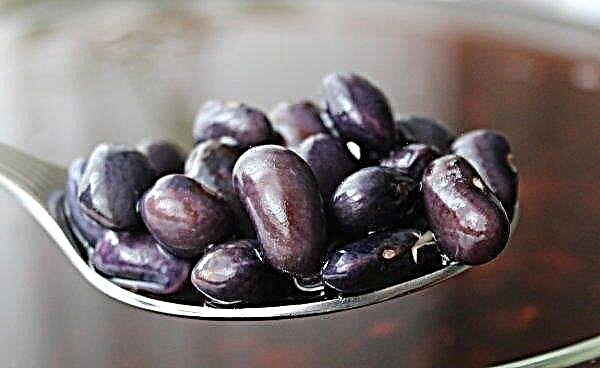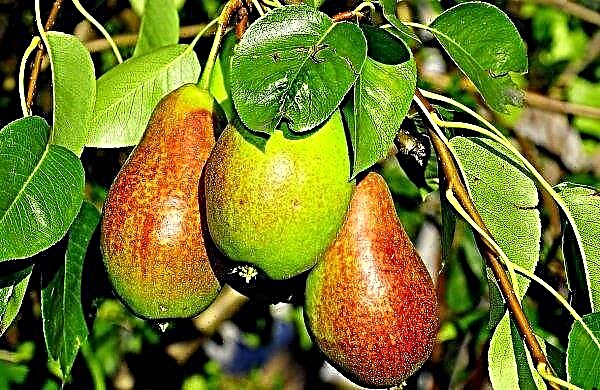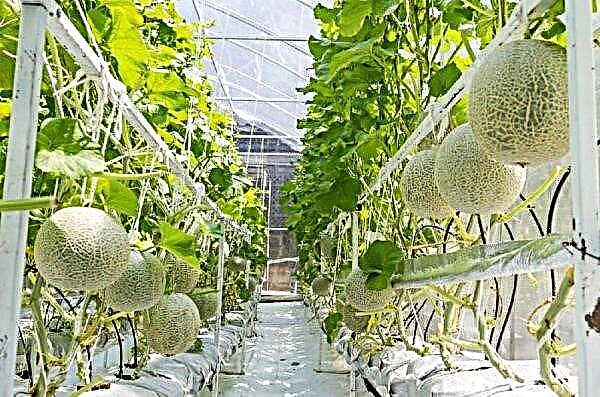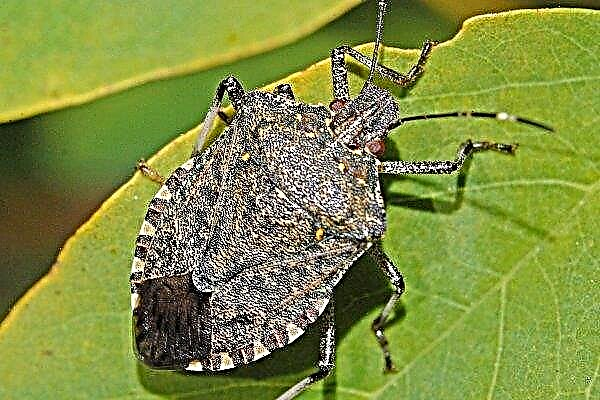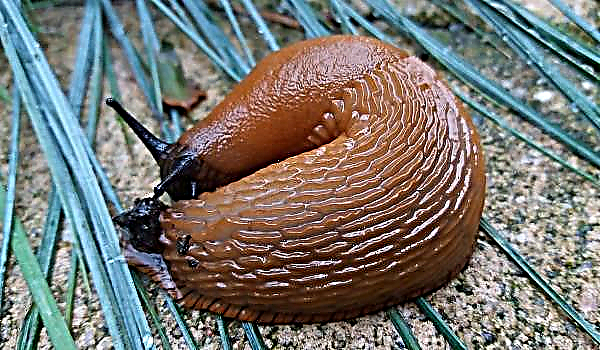Quite often, one has to face the fact that when planting a good, strong planting material for tomatoes, powerful, strong bushes with a small formation of fruits are obtained. Let's try to figure out why this happens and what mistakes are made in caring for the plant.
Why are tomatoes in the greenhouse small: the main reasons
Factors that affect the growth and development of a plant, its fertility, are:
- non-compliance with the temperature regime;
- insufficient watering;
- inappropriate air humidity;
- lack of nutrients.
Did you know? The largest greenhouse with the name "Eden" is located in the UK. Its construction took 30 months. The area of the building is 22,000 m², and in appearance it resembles the cells of a large hive.
Violation of the thermal regime
At every stage of tomato growth and development, maintaining the necessary microclimate is a paramount task. This affects the pollination processes of flowers that have emerged, the formation of tomato ovaries, the preservation of flowers and ovaries, and their development.
The best temperature indicators for pollination of tomato flowers are considered to be +24 ... + 28 ° С in clear sunny weather, +18 ... + 20 ° С in cloudy days.
At high temperatures (above + 30 ° C), pollen viability indices decrease, at low (below + 15 ° C) pollen ripening stops or does not occur at all. Both high and low temperatures are equally detrimental to the culture, as they become the reason that pollination does not occur, the ovaries fall off.

Unsuitable air humidity
The process of ovary formation is affected by air humidity in the greenhouse. At high rates (65% or more) the tomato crop can not wait.
At the stage of flowering of tomatoes, the formation of fruit ovaries - the plant needs a fresh stream of air and low humidity. To do this, open the window (window) or in any other way ensure the removal of moist and very hot air. High humidity and heat can damage the tomato crop more than the combined forces of pests, diseases and frosts.
High atmospheric humidity negatively affects pollination of plants. Due to humidity, plant pollen rolls into lumps and is unable to fall out of anthers, and if at the same time the temperature values exceeded + 32 ° C - it becomes sterile.Important! The appearance of additional roots on tomatoes indicates an increased humidity in the greenhouse.
Lack of moisture in the soil
For the development and growth of fruits, timely watering is necessary. An ideal soil moisture for a crop is considered to be 70–75%; non-observance of these standards can lead to loss of flowers and ovary.
At the time of flowering and ovary formation, it is not advisable to allow a long break between watering, and watering after a long period of drought leads to cracking of the remaining fruits.
Watering is carried out with settled water, heated to +22 ... + 26 ° С. Watering with cold water from a well or a well, especially on hot days, leads to crop diseases and crop loss. Watering during the hours of solar activity is harmful to plants; evening hours are considered the best time after sunset.
Important! To preserve moisture in the soil for a long period of time, it is necessary to carry out regular loosening work, use moisture-intensive soil mixtures.
Unbalanced diet
Like other greenhouse plants, tomatoes need extra nutrition. The land on which tomatoes grow must be fertilized.

Recommendations regarding top dressing:
- On the lands fertilized with fresh manure in the spring, tomato bushes will develop splendidly and quickly, while flowering is not pronounced, the ovaries are poorly formed. Such bushes are removed part of the foliage, foliar and root top dressing with phosphate fertilizers is carried out, watering is reduced.
- Tomato shoots quickly turn green, plant growth is insignificant, leaves brighten and turn yellow, small fruits quickly ripen - there is a nitrogen deficiency.
- With a lack of potassium at the edges of the old leaves, a brown, as if burnt, border is observed, after which they turn yellow and crumble. Chlorosis spreads throughout the plant; brown-black stripes appear on the fruits and inside them.
- With a lack of calcium, the leaves turn yellow, young leaves appear with deformation, inflorescences are infected with apical rot.
- Copper deficiency is manifested in whitened leaves, small young leaves, the color crumbles.
Carbon deficiency
In greenhouse conditions, it is necessary to provide garden crops with carbon nutrition, because they have intensive photosynthesis, and they need carbon.
In greenhouses, where humus or manure is not added to the beds, barrels for fermentation are placed. Part of the tank is filled with manure (grass), 2 parts - with water. Moisture will evaporate and saturate the plants with carbon.

What to do and how to increase the yield?
To increase fruiting, you must:
- For 7 days, stop watering.
- Ensure timely ventilation of the greenhouse, control over the indicators of humidity in the room.
- Observe temperature conditions.
- Reduce the amount of fertilizing. Reduce the level of nitrogen in the soil.
- Remove excess shoots and leaves on the plant.
Did you know? The largest and heaviest tomato (3510 gr.), Grown by farmer G. Graham from Oklahoma, is listed in the Guinness Book of Records in 1986, and since then this record has not been broken.
Preventive measures
To obtain large fruits and a decent harvest, the following rules must be observed:
- Temperature mode. Depending on the time of day, temperature indicators should change in the daytime - +23 ... + 26 ° С, at night - +16 ... + 20 ° С.
- Regular watering. Watering is carried out under the root with defended water 3 times a week. For one irrigation of a stunted variety, 5 l of water is used, for tall - 10 l.
- Plant nutrition is necessary but cannot be overfed. It is necessary to fertilize strictly according to the schedule and not exceeding the indicators.

- Stepson. For ventilation of bushes, the prevention of plant diseases, he is carried out stepsonation once every two weeks. All side shoots are removed, leaving only the flowering parts of the plant.
- Planting density. If the bush planting density is not observed, the plants receive little sunlight, the bushes are pulled out (lengthening the stem and growing leaves), the tomato does not have the strength to lay the fruits.
Did you know? The founder of greenhouses in Russia is Peter I. He insisted on laying the Pharmacy town in St. Petersburg to grow medicinal herbs and unprecedented exotic plants in it.
Recommendations for growing tomatoes in a greenhouse
Growing tomatoes in a greenhouse, special attention is paid to the soil in which they will grow. It is no secret that in fertile lands, culture will grow well, develop, and the harvest will delight. When a plant receives the necessary amount of nutrition from the soil, then the disease resistance is higher. The next step to get a good harvest is taking care of the plant itself, from the first day of planting.
It is as follows:
- Tomato seedlings are planted only in heated ground - pour the prepared wells with boiling water before planting.
- The distance between the bushes should be at least 60 cm.
- If hot days have fallen during the pollination season - spray greenhouse windows with a weak solution of chalk, this will create protection from the sun, but do not whiten them completely.
- On hot days, with high humidity, create drafts, and for the pollination process - tap on the thread to which the tomato is tied, or if the plant is stunted - just shake the branches of the bush.
- To prevent the flowers from shedding on the bush, you can spray the tomatoes with special stimulant preparations to form an ovary.


